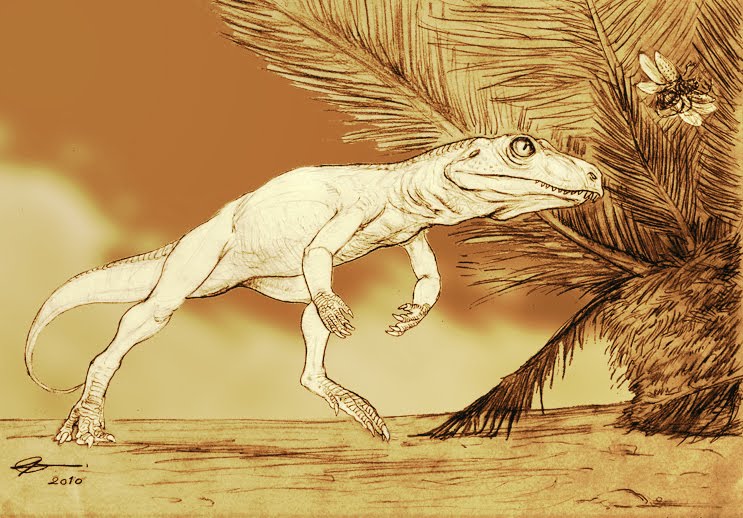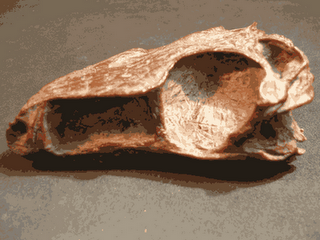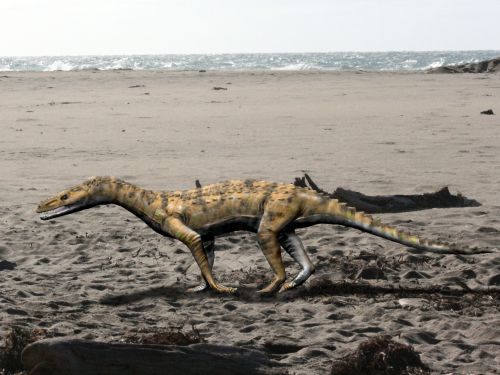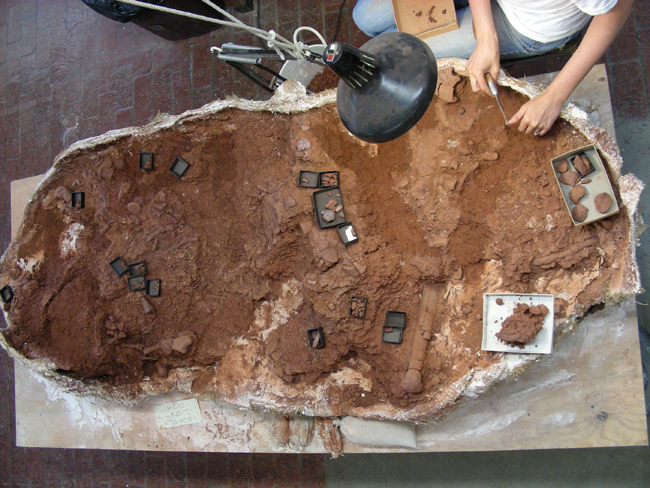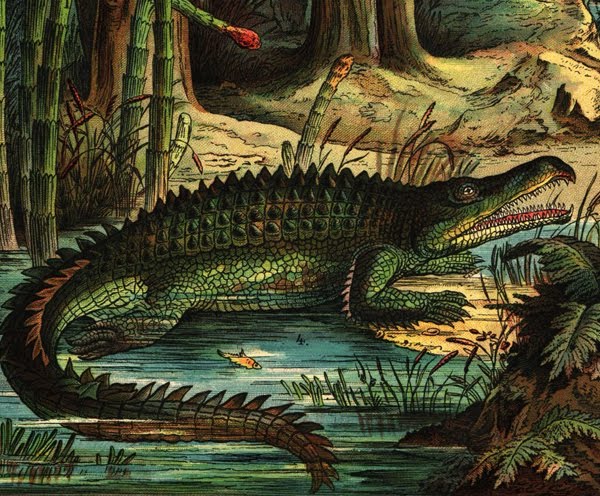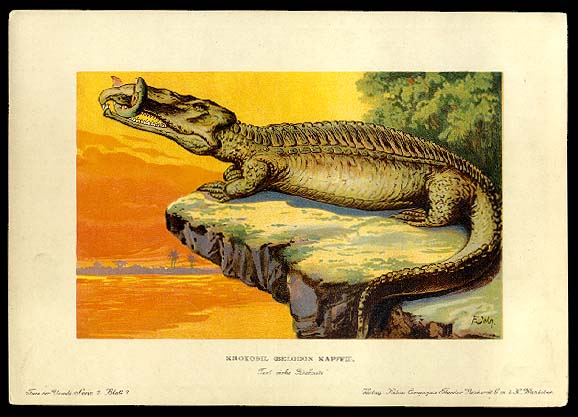[Recent Entries][Archive][Friends][User Info]
March 6th, 2012
| March 6th, 2012 | |
|---|---|
| 05:13 pm [industrialterro] [Link] |
Gracilisuchus Gracilisuchus (meaning "graceful crocodile") is an extinct genus of tiny (30 cm long) crurotarsan (a group which includes the ancestors of crocodilians) from the Middle Triassic. It was a suchian close to the ancestry of crocodiles, and was at one time thought to be a dinosaur, but this hypothesis has since been rejected. Its fossils were first discovered in the 1970s. Этот род, представители которого встречались в Южной Америке в среднем триасе — один из самых древних в подотряде сфенозухий. В 1970-х его относили к орнитозухидам, в частности, в работах американского палеонтолога Альфреда Ромера, однако в 1981 Бринкман показал, что Gracilisuchus отличается от всех представителей вышеупомянутого семейства строением предплюсны и щёчной области, и предположил его родственные связи со Sphenosuchus и другими родами подотряда Sphenosuchia. По большинству признаков скелета Gracilisuchus напоминает текодонтов. Предплюсна нормального крокодилового типа, выпуклая латеральная поверхность таранной кости заходит в углубление пяточной. Пятый палец редуцирован, и проксимальный конец пятой метатарсалии не сохраняет примитивной крючковидной конфигурации. Лобковые кости длинные и, по-видимому, не участвуют в образовании вертлужной впадины. Коракоиды короткие, предглазничное окно, как и у большинства текодонтов, крупное и окружено обширным углублением. Строение щёчной области убедительно свидетельствует о родстве с крокодилами. Дорсальный конец квадратной кости загнут вперёд, и над ним нависает широкий край чешуйчатой кости. Теменные кости сзади сливаются. Дермальный панцирь располагается вдоль всей длины позвоночного столба. На один сегмент приходятся примерно две его пластинки. Элементы двух рядов зубчато соединены по средней линии. Шейные рёбра очень похожи на таковые у современных крокодилов: у них две отчётливо разделенные головки и короткий, направленный назад стержень, перекрытый спереди концом предшествующего ребра. Шейных позвонков семь, следующий за ними несёт ребра промежуточного строения. Несмотря на ряд сходных с крокодилами признаков в строении черепа, большинство особенностей скелета связывает Gracilisuchus с текодонтами, однако представителей этого рода нельзя отнести ни к одному из известных семейств этой группы.
Tags: Вымершие рептилии, Триас, архозавроморфы, архозавры, диапсиды, круротарзы, текодонты |
| Time | Event |
| 05:37 pm [industrialterro] [Link] |
Turfanosuchus Turfanosuchus is a genus of archosauriform reptile which lived during the Middle Triassic of northwestern China. The type species, T. dabanensis, was described by C.C. Young in 1973, based on a partially complete but disarticulated fossil skeleton (IVPP V.32237). Young originally believed that the fossils came from an animal similar to Euparkeria, and assigned it to the family Euparkeriidae. The fossil, however, was not fully prepared. Subsequent analysis by Parrish in 1993 indicated that the fossils represented a suchian. In 2001, Xiao-Chun Wu (of the Institute of Vertebrate Paleontology and Paleoanthropology in Beijing) and Anthony Russell (of the University of Calgary) redescribed the fossil. Wu and Russell prepared the fossil, and noted the limb bones (femur and humerus) resembled those of Ticinosuchus and Euparkeria, though the calcaneum did not. Further preparation revealed a partial osteoderm. Wu and Russell concluded that Turfanosuchus was not a suchian nor even a member of the Crurotarsi. They also ruled out the possibility of a close relationship with Euparkeria. In 2010, paleontologists Martín Ezcurra, Agustina Lecuona, and Augustín Martinelli found Turfanosuchus to be a crurotarsan once again. This reassignment was based on the structure of the calcaneum, which is similar to that of other early crurotarsans, especially aetosaurs.
Tags: Вымершие рептилии, Триас, архозавроморфы, архозавры, диапсиды, круротарзы, текодонты |
| Time | Event |
| 06:02 pm [industrialterro] [Link] |
Lotosaurus Lotosaurus is an is an extinct genus of sail-backed poposauroid known from Hunan Province of central China. Lotosaurus is known from the holotype IVPP V 4881 (or possibly V 4880), articulated well-preserved skeleton, and from the referred specimens IVPP V 48013, skull, articulated and disarticulated skeletal remains of at least ten individuals, all came from a monotypic bonebed. All specimens were collected from the Lotosaurus site, from the Batung Formation (or alternatively Xinlingzhen Formation of the Badong Group), dating to the Anisian stage of the early Middle Triassic, about 245-237 million years ago. Lotosaurus was 2.5 m (8.2 ft) long and a heavily built quadruped. It was a herbivore, biting off leaves with its toothless jaws. Lotosaurus, like some other members of the Poposauroidea, had a sail on its back. It looked similar to that of Permian pelycosaurs like Dimetrodon and Edaphosaurus, although not as high. Lotosaurus was originally thought to be a thecodont, probably related to Ctenosauriscus and other archosaur taxa with elongated neural spines (=Ctenosauriscidae). Many recent cladistic analyses confirmed this affinity. Nesbitt (2007) was the first to suggest that Lotosaurus is more closely related to Shuvosaurus (a shuvosaurid) than to Arizonasaurus (a ctenosauriscid). In his massive revision of archosaurs which included a large cladistic analysis, Sterling J. Nesbitt (2011) found Lotosaurus to be a poposauroid, sister group of the Shuvosauridae, and therefore it is not included in the Ctenosauriscidae. Further studies confirmed these results. Lotosaurus was first named by Fa-kui Zhang in 1975 and the type species is Lotosaurus adentus. Lotosaurus was originally placed in its own family, Lotosauridae, which named by Zhang in 1975. The specific name is derived from the Greek a and denta, meaning "toothless", in reference to its toothless beak.
Tags: Вымершие рептилии, Триас, архозавроморфы, архозавры, диапсиды, круротарзы, попозавройды, равизухии |
| Time | Event |
| 06:17 pm [industrialterro] [Link] |
Yarasuchus Yarasuchus is an extinct genus of rauisuchian, a group of predatory and large Triassic archosaurs. It lived during the Anisian stage of the Middle Triassic of India. Being only 2 metres long, is was one of the smallest rauisuchians known. The genus was named and described in 2005 from incomplete fossil material found from the Middle Triassic Yerrapalli Formation, thought to be from two individuals, with one being much more complete and articulated than the other. The type and only species is Y. deccanensis. The cervical vertebrae that make up the neck of Yarasuchus are characteristically elongated, while the skull is proportionally small. The genus is also distinguished from other prestosuchids by a delicately built pectoral girdle and a continuous acromion process of the scapula. The neural spines of the vertebrae are high and the paramedian osteoderms are greatly sculptured with a ridge running anteroposteriorly along each one. Yarasuchus may have had a facultatively bipedal gait. Many other vertebrate remains have been found from the Yerrapalli Formation alongside those of Yarasuchus, and would have coexisted with the genus during the Middle Triassic. Remains of the prolacertiform Pamelaria dolichotrachela have been found in close proximity to those of Yarasuchus. Other vertebrate remains include those of the dipnoan Ceratodus, the actinopterygian Saurichthys, the temnospondyl Parotosuchus, and the dicynodonts Rechnisaurus and Wadiasaurus.
Tags: Вымершие рептилии, Триас, архозавроморфы, архозавры, диапсиды, круротарзы, попозавройды, равизухии |
| Time | Event |
| 06:36 pm [industrialterro] [Link] |
Erpetosuchus Erpetosuchus is an extinct genus of crurotarsan from the Late Triassic. It was first described by E. T. Newton in 1894 for remains found in northeastern Scotland, with more remains found in the United States in recent years. Erpetosuchus is the sister-taxon to Crocodylomorpha. The type species of Erpetosuchus is E. granti. The first remains of Erpetosuchus were found in the Lossie Mouth Sandstone Formation in Scotland (late Carnian, Late Triassic), and consist of a skull and a partial postcranial skeleton. The holotype is BMNH R3139 During a field trip in 1995 to the lower part of the New Haven Formation in Connecticut, American palaeontologist Paul E. Olsen discovered a partial skull that, after preparation and description in 2000 (Olsen et al. 2000), was referable to E. granti. This was the first record of E. granti outside of Scotland. The specimen has been given the number AMNH 29300 , and besides the right side of the skull, also has some vertebrae and indeterminate bones associated. Dating of the lower portion of the New Haven Formation indicates a Norian (Late Triassic) age. Erpetosuchus granti was originally assigned to Thecodontia, but that name no longer appears in scientific literature because it is a paraphyletic group, consisting of distantly related archosaurs. It has also been considered a crocodylomorph, included within the clade Erpetosuchia, or as a pseudosuchian. A more recent phylogenetic analysis by Olsen et al. (2000) found E. granti to be the sister-taxon to the Crocodylomorpha. These are united in a clade by the following synapomorphies: 1) Medial contact of the maxillae to form a secondary bony palate, 2) Absence of a postfrontal, 3) Parietals fused without a trace of an interparietal suture. Bathyotica is a clade of crurotarsan archosaurs that includes the superorder Crocodylomorpha and its sister taxon Erpetosuchus, a small Triassic suchian. Bathyotica was named in a 2002 phylogenetic study of Erpetosuchus. The genus was found to be closely related to crocodylomorphs, and Bathyotica was erected to encompass both taxa. Bathyotica has several apomorphies, characteristics that distinguish it from more basal crurotarsans. A prominent feature is the forward sloping of the quadrate and quadratojugal bones at the back of the skull. The sloping bones open up a space called the otic recess, which is positioned behind the lower temporal fossa, a hole on the side of the skull behind the eye sockets. Members of Bathyotica also lack a postfrontal bone.
Tags: Вымершие рептилии, Триас, архозавроморфы, архозавры, диапсиды, круротарзы, равизухии, эрпетозухиды |
| Time | Event |
| 06:54 pm [industrialterro] [Link] |
Angistorhinus Angistorhinus (meaning "narrow snout" or "hook snout") is an extinct genus of phytosaur known from the Late Triassic period of Texas and Wyoming, USA. It was first named by Mehl in 1913 and the type species is Angistorhinus grandis. Other species from Texas and Wyoming, A. alticephalus (Stovall and Wharton, 1936), A. gracilis (Mehl, 1915) and A. maximus (Mehl, 1928), are cospecific with the type species. Angistorhinus is known from the holotype UC 631, partial skull and lower jaws recovered from the Popo Agie Formation, Chugwater Group, Wyoming and from the associated paratype UM 531, a partial skull, TMM 31098-1, skull and lower jaws and ROM 7977, partial skull and lower jaws, recovered from the 'Pre-Tecovas Horizon' in the Dockum Group, Texas. A possible second species, A. talainti is known from the Triassic of Morocco. In 1995, Long and Murry created the new combination, Angistorhinus megalodon by synonymy for Brachysuchus. Hungerbühler and Sues (2001) hypothesised that Angistorhinus is a junior synonym of Rutiodon. However, in 2010 Michelle R. Stocker retained the validity of Brachysuchus and of A. grandis. Фитоза́вры (Phytosauria) — монотипический отряд вымерших пресмыкающихся из позднего триаса, относимый к архозаврам и включаемый в сборную парафилетическую группу текодонтов, или ячеистозубых. Окаменелости обнаруживались в отложениях верхнего триаса на территории Западной Европы, Северной Америки, и Азии. Отряд фитозавров включает единственное семейство Phytosauridae представители которого обитали в пресноводных водоёмах, в основном питались рыбой. Внешне и деталями строения очень схожи с крокодилами. Однако, большинство учёных рассматривают данное сходство как конвергенцию, впрочем существует мнение о том, что фитозавры были предками крокодилов. Крупные животные с длиной тела 5—6 метров. Имели удлинённое рыло с отнесёнными далеко назад ноздрями и глазницами обращенными вверх. Задние лапы были незначительно длиннее передних. Обладали хорошо развитым кожным панцирем. The phytosaur skull was characterized by three distinct morphotypes, which relate to feeding and habits and not (as was once thought) evolutionary relationships. These skull patterns are linked to characteristics of the dentition; specifically the differentiation or similarity of the teeth along the jaws. Dolichorostral ("long snouted") types have a long, slender snout and a large number of conical teeth that are the same throughout. These were most likely piscivorous, able to capture fast slippery prey, but not so good at tackling a land animal. Some examples are Paleorhinus, Rutiodon carolinensis, and Mystriosuchus. At one time it was believed that Paleorhinus and Mystriosuchus belonged to a distinct group of phytosaurs (subfamily of family Mystriosuchinae/Mystriosuchidae Huene, 1915) characterised by this adaptation, but it is now known that Mystriosuchus is actually more closely related to Pseudopalatus, an "altirostral" form (Hungerbühler, 2002). Brachyrostral ("short snouted") forms are the opposite, they have a massive, broad snout, and a very strong skull and jaws, with the front teeth like fangs for holding the prey, and the rear teeth blade-like for slicing the meat into chunks that can easily be swallowed (an animal with different types of teeth like this is called heterodont). These were powerful animals specialised for feeding on strong struggling prey, such as terrestrial animals that come to the water to drink. Examples of this type are Nicrosaurus and Smilosuchus Altirostral ("high snouted") animals are intermediate between the two. They had heterodont dentition but not as extremely developed as the brachyrostral type. Angistorhinus and Pseudopalatus are typical examples here. These were most likely generalist feeders. Modern crocodilians exhibit a similar morphological diversity, for example the broad snouted altirostral alligator and the long snouted dolichorostral gavial. Phytosaurs were even better armoured than crocodiles, protected by heavy bony scutes (often found as fossils), and the belly reinforced with a dense arrangement of gastralia (abdominal ribs). Despite their great similarities in appearance and lifestyle, there are still a number of minor differences that distinguish phytosaurs from true crocodiles. For one thing, the phytosaur ankle structure is much more primitive than that of any crocodile. Also, phytosaurs lack the bony secondary palate that crocodiles have that enables them to breathe even when the mouth is full of water. It is possible however that phytosaurs had a fleshy palate, as many Mesozoic crocodiles are presumed to have had. Finally, and most noticeably, phytosaurs had nostrils placed near or above the level of the eyes, in contrast to crocodiles where the nostrils are near the end of the snout. This adaptation may have developed to allow them to breathe while the rest of the body was submerged. In a 2001 study of the biomechanics of the dinosaur Albertosaurus's teeth, William L. Abler also examined a phytosaur's teeth, finding that it had had serrations so fine that they resembled a crack in the tooth. Albertosaurus had similarly crack-like serrations, but, at the base of each serration Abler discovered a round void which would have functioned to distribute force over a larger surface area. This void, termed an ampulla, would hinder the ability of the "crack" formed by the serration to propagate through the tooth. The phytosaur was found to lack adaptations for preventing its dental "cracks" from propagating. Abler examined another sort of prehistoric predator, Dimetrodon, and found that it lacked adaptations for guarding against crack propagation as well.
Ископаемые останки (1, 2, 3, 4):
Tags: Вымершие рептилии, Триас, архозавроморфы, архозавры, диапсиды, круротарзы, текодонты, фитозавры |
| Time | Event |
| 07:28 pm [industrialterro] [Link] |
Pseudopalatus Pseudopalatus (meaning "false palate") is an extinct genus of pseudopalatine phytosaur. It was assigned to Parasuchia in 2005. Specimens have been found from Arizona and New Mexico and are of Norian age. Pseudopalatus lends its name to the family Pseudopalatinae, of which it is the type genus. Pseudopalatus was a relatively large pseudopalatine phytosaur with a skull up to 120 cm in length. It had a robust rostrum with a distinctive dorsal crest.
Ископаемые останки (1, 2, 3, 4):
Tags: Вымершие рептилии, Триас, архозавроморфы, архозавры, диапсиды, круротарзы, текодонты, фитозавры |
| Time | Event |
| 07:59 pm [industrialterro] [Link] |
Belodon Belodon (meaning "arrow tooth") is a genus of phytosaur, a crocodile-like reptile that lived during the Triassic. Its fossils have been found in Europe and elsewhere. The type species, Belodon plieningeri, was named by prolific German paleontologist Christian Erich Hermann von Meyer in 1844. Many other species were also named, among them Belodon buceros (named by Edward Drinker Cope in 1881), Belodon kapfii (von Meyer, 1861), Belodon lepturus (Cope, 1870), Belodon priscus (originally described as Compsosaurus priscus by Joseph Leidy in 1856), Belodon scolopax (Cope, 1881), and Belodon validus (Othniel Charles Marsh, 1893). Some paleontologists of the late 19th and early 20th century believed Belodon was synonymous with Phytosaurus or Machaeroprosopus.
Tags: Вымершие рептилии, Триас, архозавроморфы, архозавры, диапсиды, круротарзы, текодонты, фитозавры |
| Previous Day | 2012/03/06 [Archive] |
Next Day |

